Paradise Earth by Amy Barker
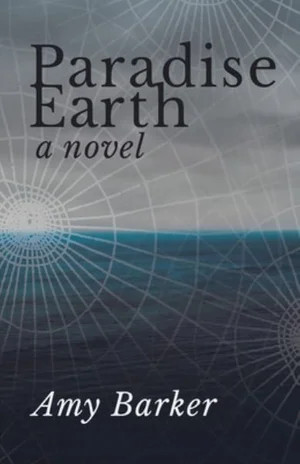
Themes Homecoming, Port Arthur (Tasmania),Trauma.
Elizabeth Bondar

Themes Homecoming, Port Arthur (Tasmania),Trauma.
Elizabeth Bondar
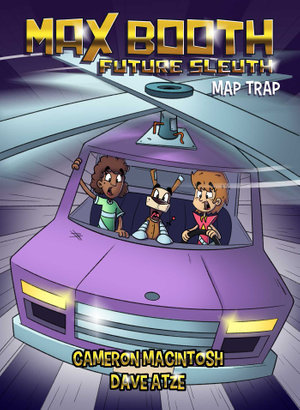
Max Booth returns for another adventure in the sixth book of the series Max Booth Future Sleuth, written by Cameron MacIntosh and illustrated by Dave Atze. The year is 2424, and this sci-fi novel reminds me of The Jetsons cartoon that I watched as a young child; with flying cars and hover scooters. Once again Max and his intelligent beagle-bot Oscar are off on another adventure, trying to help Jessie identify museum artefacts. The funny part is that these objects are regular everyday pieces to us today but being in the future they are very confused and intrigued to find out more. While investigating the origins and functions of another newly found museum piece, Max and Oscar adventure around Bluggsville City and beyond. They discover information to identify the piece as being a GPS navigation device. Naturally intrigued, they charge it up and follow its home tracking system to discover the original owner. While travelling through streets that are now renamed or no longer exist, Max and Oscar stumble upon a dangerous art heist. What will they do? Will Max and Oscar be able to get themselves out of a potentially dangerous situation or will they finally be caught and sent back to Skyburb 7…. the Home for Unclaimed Urchins that they horribly dread?
Map Trap is an easy to read novel, with short chapters and a well-spaced print layout. The black and white illustrations are intertwined carefully and creatively within the novel to generate great visuals to support what is happening in the narrative. This gives further opportunities for engagement and interest by the reader. This is a series that would appeal to any person who likes futuristic stories, adventure and action. The text is captivating and exciting, and the reader is easily transported to the 25th Century. The reader is continually wanting to read on to find out what will happen next.
Themes Sci Fi, Technology (past, present and future), Detectives, Action, Adventure.
Michelle O'Connell

Love Monster is going on an exciting adventure with his friends to the beach! He can't wait to be THE BEST SURFER IN THE WORLD! But as Love Monster gets closer to the extremely big waves, the less sure he is. Will he even have the courage to dip a toe in the ocean? Of course he does - after a bit of trepidation and consideration. But that first wave dumps him so does he have the courage to try again?
This is a story featuring a character who now has his own series on CBeebies, thus making him familiar to many young readers and encouraging them to read. It has a familiar theme of being afraid to try something new but having the courage to eventually have a go, perhaps inspiring those same young people to tackle something that has seemed like a mountain to them so they too, can feel the thrill and empowerment of achievement.
Themes Monsters, Surfing, Persistence, Friendship.
Barbara Braxton
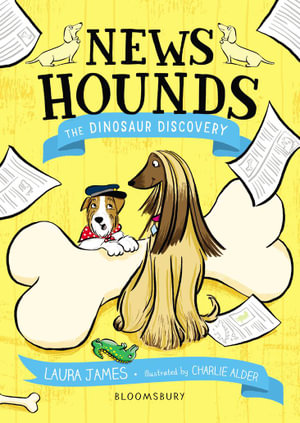
From the author of The Adventures of Pug series comes this new doggy series perfect for young readers. Short chapters, lots of bright, full-colour, adorable illustrations and large font (as well as a simple, yet engaging storyline) will keep independent readers turning the pages.
In this first instalment Gizmo the sausage dog has just moved from the big city to the country with his journalist human...and he isn't too impressed with what he finds: fresh air, mud, bugs and big dogs! When he meets his new next door neighbour Jilly, he is sad to learn that her puppies are about to be sold off and sent far away. Gizmo just has to help, and using his superb writing skills (and his human's typewriter and photocopier) he manages to do just that. At the end of the story the town pups decide to start up a newspaper, with Gizmo at the helm as editor. This sets up the context for the ensuing books in the series, hence the News Hounds series name. The Puppy Problem contains lots of character development for each of the pups and the inside of the cover also profiles each one, their personality traits and their role in the newspaper crew: stylish Bruno lives at the hair salon, Bob is the station master's dog and loves to travel, Lola is sports mad and Bunty has a nose for rain.
This is a charming new series, complete with dashes of humour and doggy mischief, perfect for Pug fans and animal lovers in general.
Themes Problem solving, Dogs, Friendship.
Nicole Nelson
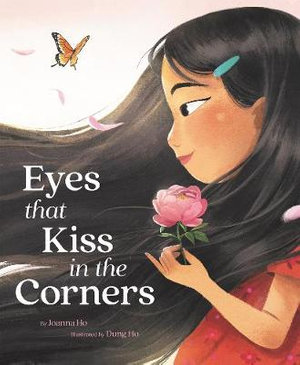
"Some people have eyes like sapphire lagoons with lashes like lace trim on ballgowns, sweeping their cheeks as they twirl.
Not me.
I have eyes that kiss in the corners and glow like warm tea."
This is the stunning story of a young Asian girl who notices that her eyes are a different shape from those of her friends, but they are the same shape as her Mama's, her Amah's and her little sister's, All their eyes " crinkle into crescent moons and sparkle like stars. Gold flecks dance and twirl while stories whirl in their oolong pools, carrying tales of the past and hope for the future." And her own eyes "find mountains that rise ahead and look up when others shut down". Through her lashes which "curve like the swords of warriors" she sees kingdoms in the clouds and because they are just like those of the most important women in her life, they are hers and they are beautiful.
It is said that the eyes are the window to the soul and nowhere is that made more explicit in the exquisite language and beautiful illustrations of this story of discovery, revelation and self-empowerment. While we are familiar with mapping the differences in eye colour amongst students, seldom do we ask them to look at shape; while we are familiar with examining the mechanics of how the eyes work, seldom do we consider their origins, their legacy and their vision.
This is such an original story, with such exotic, poetic language that it scarcely needs the illustrations, yet one that will resonate with so many of our students. While there are activities available, this is one that can be so easily enriched with the use of just a mirror and one that will be remembered for so much more.
Barbara Braxton
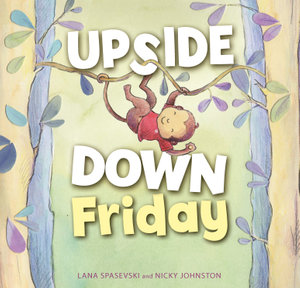
Hugo the monkey doesn't like Upside-Down Fridays. To be able to fit in sport, lunch time and morning tea time have been swapped on Fridays and Hugo's routine is the wrong way round. So school has become a scary place full of uncertainty and despite his mother's explanation and reassurance, Hugo is full of anxiety about what the day will bring. However, with just a small gesture of friendship and understanding from Maddie the giraffe, Hugo begins to feel braver.
Many children depend on the familiar routine of the school day to be able to manage the busy-ness, noise and movement of an environment so much bigger than their home, which is why many teachers now display each day's timetable clearly so that those dependent on routine can adapt and adjust if they have to. For those who can adapt easily to change, it is often difficult to understand the anxiety of those who can't so as well as supporting the routine-dependent by acknowledging their problem, this gentle story helps the others understand.
Using a common device of depicting Hugo as a monkey and his classmates as familiar jungle animals, the story remains one step removed from any particular child in the classroom enabling anonymity so further anxiety is not caused. It also offers the opportunity to discuss how normal and natural it is to be concerned about big changes such as going to school or hospital for everyone - we all feel anxious at times - and how to develop strategies to help ourselves and others to build confidence. How did Maddie know that giving Hugo a balloon would distract him?
Comprehensive teachers' notes linked to the early years of the Australian Curriculum are available to make the most of this delightful story and its perfect illustrations.
Barbara Braxton
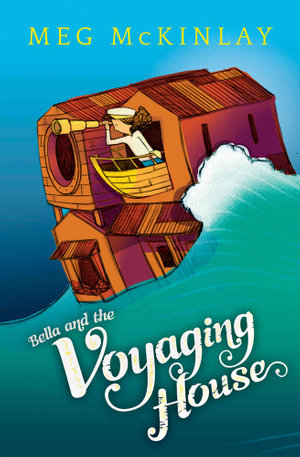
When Bella sets out one night on a trip into the ocean in her house, wanting to retrieve the little statue that fell overboard some years ago, she did not bargain on her house taking a stand. On its pink legs it walks into the ocean using its toes to find the statue, grandfather’s link to his wife. But her parents have always warned her to be back by morning, but on waking, find they are all stuck in the ocean, the house refusing to move.
This wonderful invention had me hooked in Bella and the wandering house (2015) where excited readers were first introduced to this amazing house, where Bella’s room is an attic built from the remains of her grandfather’s boat giving the house its extraordinary powers. Imaginations will soar reading the sequel where the family finds itself marooned far from home. A cruise ship hovers by offering help, but grandfather has been using his Twitter account and has seen the predicament they are in. He finishes building his kite and, rescuing the family, works with Bella to find a solution to their problem.
Hilarious sequences will enthral readers as they sympathise with Bella dealing with her predictable parents and laugh out loud at dad’s sayings, while loving grandfather to bits with his inventions and focus on Bella, and scoff at the thumb nail sketches of some of the passengers on the cruise.
All ends well, of course, as the parents try their own hand at steering the house/boat and Bella and her grandfather fly off in the kite, adventure on their minds.
A wonderful story with the warmth of home at its heart, Bella and her voyaging house will win over legions of readers, loving the idea of a house that can walk about and have adventures with the young girl who steers it. Who would not want a bedroom like Bella’s, made from the old boat, its prow pointing out into the sky around. Lots of nautical words will attract the attention of the reader, particularly in the expressions dad loves to use. Illustrations by Nicholas Schafer form a wonderful backdrop to the story, making the impossible seem quite possible. Teacher's notes are available.
Themes Ocean, Boats, Cruise ships, Kites, Inventions, STEM, Family.
Fran Knight
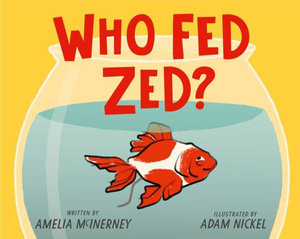
Friends, Ned, Fred and Ted and the writer look after Fred’s fish, Zed, but on strict instructions that no one feeds the fish bread. We see what happened last time when Zed was fed bread: it had to be taken to the vet who admonished the group, saying that bread was dangerous to animals and to stick to fish food in its little cardboard packet.
Meanwhile, Fred’s dog, Jed has fleas and is confined to the shed after being sprinkled with flea powder, also in a little cardboard packet. So the four friends must watch the fish, although it becomes obvious that Zed is not happy. Just like before, the fish is lying upside down, and everyone is looking at each other asking the question, who fed Zed bread?
A neat solution is offered when it appears that the two packets have been interchanged, and all is put right.
Kids will laugh out loud at the hilarious situation, the rhyming words, 'Bread', 'Zed', 'Jed' and so on, encouraging joining in with the reading, predicting the rhyming words, watching the four friends as they learn about diet and the effects of eating something that is not right for you.
Adam Nickel’s digital illustrations are hilarious: I love the placid looks on the faces of the four friends, the simply drawn faces carrying a range of emotions just from the wriggle of eye brows or the slant of the mouth. Each page had me watching the four closely to gauge what they were thinking, each time making me laugh at their idiosyncracies.
A very funny look at a group of friends working out what is wrong with the fish, this story gives readers and classes an opportunity to discuss wider issues: food allergies, diet and food intake, the care of pets, a trip to the vet and so on. The book’s zany humour reflects the author’s interest in food allergies and the need for packaging to be kid friendly.
Themes Humour, Animals, Fish, Friendship, Fleas, Food Allergies, Problem solving.
Fran Knight
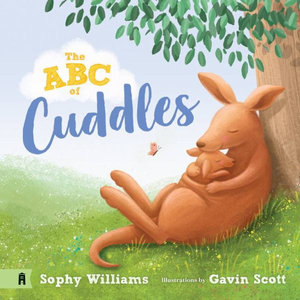
What a lovely alphabet book that parents and carers will delight in reading to young children. Written in rhyming couplets, the book is a joy to read aloud and share:
A is for airport cuddle, when it's time to go away.
B is for bear hug, when teddy goes astray.
C is for crying cuddle, a scary ghost went boo!
D is for daddy cuddle, when only Dad will do.
The author has described 24 different cuddles, each with a different pair of animals. I loved the daddy cuddle, with daddy dog sympathising with baby dog who has fallen off his billy cart, while the lazy cuddle, 'when you’re lying on the couch', shows polar bears reading a book about penguins. Little children will enjoy identifying each of the animals and will recognise the many different hugs that they have received themselves. The letters of the alphabet can be pointed out too and as the book ends with a yawning cuddle and a Z for zzzzzz, it is an ideal bedtime story.
The illustrations by Gavin Scott are awash in colour and the expressions on each of the animals’ faces are gorgeous. The little rabbits waving goodbye at the airport are forlorn, while the funny cuddle is hilarious.
Toddlers may not have the attention span to last right to the end of this delightful book, but will identify with the cuddles portrayed. I can see it becoming a firm family favourite.
Themes Love, Cuddles, Alphabet book, Animals.
Pat Pledger
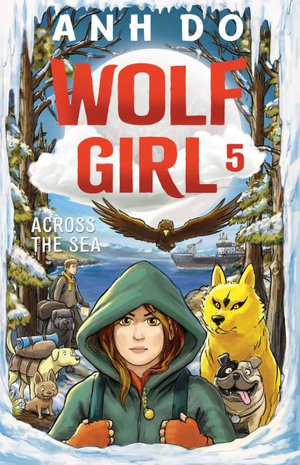
Wolf Girl 5: Across the Sea is the fifth exciting adventure in the Anh Do series about Gwen, Rupert and their animal friends. They are on a long and perilous journey to find family members who have been taken prisoner by soldiers of the evil ruler. This latest story is set in the icy cold tundra and the pack is following a lead as to the whereabouts of Gwen and Rupert’s parents who may be being held captive on a ship. On their journey to the village of Gulfoss where the ship carrying prisoners is expected to dock, the children and the animals face perilous conditions. When they arrive in Gulfoss they find it abandoned but the ship docks not long after. The pack make plans to secretly board and find out if their parents are among the prisoners. They encounter a new four-footed companion whom they rescue from the soldiers and he provides valuable support when they all sneak on board. For one of the children the story has a happy outcome but it is bittersweet when the break out of prisoners goes awry. The pack is once again on the run but an important member has been replaced for the time being. Book six will be released soon and more will be revealed.
This excellent middle grade series continues to provide the reader with adventure, excitement, danger and humour. The illustrations complement the text perfectly. There is an added bonus sealed section which introduces Wolf Girl Gwen to Amber, the main character in Anh Do’s series Skydragon.
Themes Family, Children, Adventure, Dogs, Survival, Trust, Animals, Danger, Tundra, Soldiers, Prisoners.
Kathryn Beilby
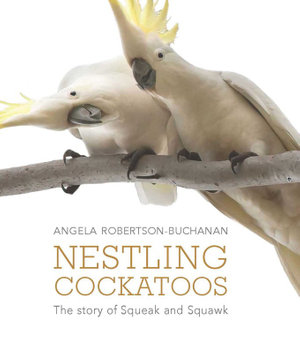
I was amazed to learn that the sulphur-crested cockatoo is as intelligent as a two-year old child. Flocks of them feed and nest in a local park near my home and I will now view them with a completely different approach thanks to this beautifully produced book.
The author Angela Robertson-Buchanan has trained as a wildlife rescuer for WIRES and specialises in the care and rehabilitation of birds and this expertise shows in her amazing photographs that vividly show the life cycle of the cockatoo. Readers will be guided through a general introduction to cockatoos (they can live up to 90 years in captivity) and then will meet Squeak and Squawk, two little cockatoos who were rescued from their tree hollow when their tree was cut down. They were only two weeks old. I was especially intrigued by the photographs of Squeak and Squawk when they were babies. More photographs follow showing them grow feathers and crests until they were three months old and were moved to an outside aviary.
The text is presented in large black print and flows easily and in a very interesting way, sure to hold the attention of very young children. Older children would be tempted to read this book for themselves, captivated by the story about these fascinating birds. A section of Cockatoo Facts summarises information about cockatoos for the avid bird watcher.
The combination of outstanding photographs and interesting text makes Nestling Cockatoos a keeper for me and an excellent resource for the classroom, school, and public library.
Themes Cockatoos, Birds, Life cycles, Photography.
Pat Pledger
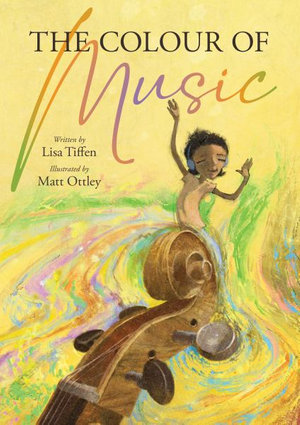
Molly can see the music. Colours flash brilliantly as she listens. The music takes her on a journey into places filled with colour, revealing connections between music, emotions, and the world we live in. As she lies on the floor with her eyes shut and her ears open, and the vibrations of sound running through the floorboards to make her fingers tingle, she is transported to a world of colours and pictures, impressions and feelings that not only give her a whole inner body experience but also a whole outer body experience.
Tiffen's lyrical text, accompanied by Ottley's magical illustrations offer the reader just a taste of the river of sights and sounds and sensations that Molly undergoes when she is connected to her music, an experience known as synaesthesia - an involuntary merging of the senses such as hearing colours or seeing sounds. But even though we might not be synaesthetic, nevertheless music can still evoke amazing images with the same piece of music interpreted differently by each individual.
Play a piece for your class while they shut their eyes and let their imaginations drift and then have then share or draw what their mind's eye saw. It is a soothing way to relax and spend an hour or two. Good for the soul and so much simpler than any contrived mindfulness exercises.
Not being the slightest bit musical, and having no love of classical music, I was amazed at how I could listen to ABC Classics on the nights I couldn't sleep during my recent illness and the places my mind went so I eventually drifted off into a technicolour dream world that mirrored the sounds I was hearing. So synaesthetic or not, the colour of music can be seen by all of us if we are willing to look.
Themes Music, Colours.
Barbara Braxton
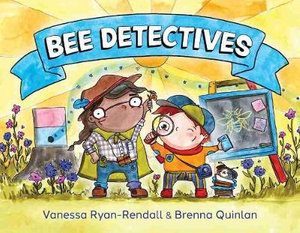
When Olivia and Hamish are woken by the scream of a chainsaw coming from their local park and see what looks like a cloud of smoke rising, they are very concerned that there is a fire. But they soon discover that what they thought was smoke is a cloud of insects disturbed when their tree home fell.
With the help of the specialist Bee Team, they learn that the insects are Native Social Stingless Bees and because the hive contains the bees' babies it needs to be rescued. That evening, when the last of the bees is safely in the temporary hive, Hamish and Olivia are invited to take it into their backyard so they can learn about these bees and how they are essential to the well-being of the environment. The children take on the challenge and they, and the reader, learn not only about the bees' importance but also about the many other native bees that live in the garden, usually unnoticed.
While the plight of bees globally is gradually being recognised as becoming critical, most young readers associate them with the fluffy black and yellow bumblebees of their storybooks, not realising that Australia alone has over 1700 species of native bees, each of which needs protection. With a special section giving the reader more information about these species, particularly those mentioned in the story, and tips on how to attract them to the suburban garden, this is an important publication to help young students develop their awareness of the role bees have and understand how they can promote their well-being. Using a story format accompanied by charming illustrations that also put the bees under a magnifying glass so they can be more than squiggles on a page means that this has the potential to be used as a springboard to an intriguing investigation as students start to identify the various species and search for them in their own surroundings.
As well as extensive teaching notes to assist this, students might also consider establishing a bee hotel to encourage the bees to stay.
Themes Bees.
Barbara Braxton
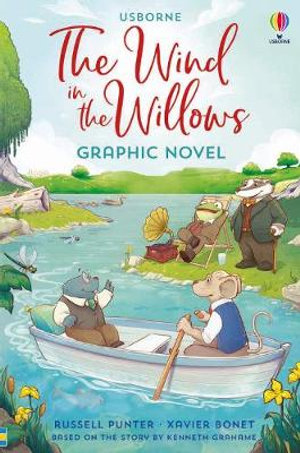
In 1908 British author brought children the story of Mole, Rat and Badger and their efforts to reform the friendly but conceited and mischievous Mr Toad of Toad Hall who is fascinated by the latest fads, particularly motorcars. But Toad is not the best of drivers and after many mishaps, finds himself in prison for 20 years for stealing a car. Even though he eventually escapes, during his absence his magnificent Toad Hall has been overtaken by weasels and stoats, and it becomes a battle to get it back.
Now, over 100 years on, it has been interpreted in graphic novel format to appeal to a new generation of readers, offering them an introduction to this classic story which has delighted so many before. This is the latest in this series which includes The Wizard of Oz and The Three Musketeers which opens up a new world of literature from past generations, inspiring independent readers to seek out the original versions. It is fast-paced and funny and has all the ingredients that have enabled it to endure for so long.
Barbara Braxton
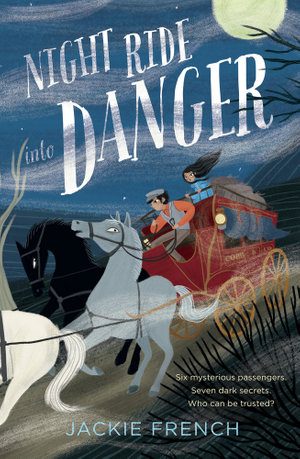
This book tells the adventure had by one boy with his Paw and what happened after a terrible accident with the Cob and Co coach that he was driving. All of the passengers on the coach on the fateful trip have their own secrets and reasons why they wanted to get to Goulburn on the night coach. Jem had some hard decisions to make to ensure that all of the passengers on the Cob and Co coach arrived at their destination along with the ever important mail bags. He found an inner strength that helped on his journey. As the passenger’s secrets are slowly revealed the layers in the story continue to unfold and make for a story that you can’t put down.
The historical information at the end of the book added to the story and the fact that the idea for the story came from the Henry Lawson poems that are in the back of the book added another interesting level to this story. It could be used as a teaching text encouraging students to choose a poem and using this to write their own story based on the characters and places in the poem.
I highly recommend this book.
Themes Cobb & Co., Australia - History - 1851-1901, Transport.
Karen Colliver